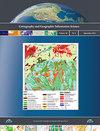Do people prefer a landmark route over a shortest route?
IF 2.4
3区 地球科学
Q1 GEOGRAPHY
Cartography and Geographic Information Science
Pub Date : 2022-06-08
DOI:10.1080/15230406.2022.2075469
引用次数: 3
Abstract
ABSTRACT Landmarks play an important role in spatial cognition, and therefore should be considered as a part of pedestrian navigation. This research addressed the question of human preference for landmark routes that are generated based on landmarks over shortest-distance optimized routes. We investigated whether there are differences regarding navigation behavior, navigation satisfaction, route memorization, route communication, and route comparison between the shortest and the landmark route. We did not observe any differences for navigation behavior, route memorization, and route communication. We observed that for the landmark route the participants were significantly faster in reversing the route. Generally, we found out that the participants were more satisfied with the shortest route and preferred the shortest route. We found hints that this might result from environmental parameters, which seemed to have an impact on navigation satisfaction. Additionally, the participants perceived the routes to be longer than they really were.比起最短的路线,人们更喜欢标志性的路线吗?
地标在空间认知中起着重要的作用,因此应被视为行人导航的一部分。这项研究解决了人类对地标路线的偏好问题,这些路线是基于地标而不是短距离优化路线生成的。我们调查了最短路线和地标路线在导航行为、导航满意度、路线记忆、路线沟通和路线比较方面是否存在差异。我们没有观察到导航行为、路线记忆和路线沟通有任何差异。我们观察到,对于具有里程碑意义的路线,参与者在逆转路线时明显更快。总的来说,我们发现参与者对最短的路线更满意,更倾向于最短的路线。我们发现,这可能是由环境参数引起的,环境参数似乎对导航满意度有影响。此外,参与者认为路线比实际要长。
本文章由计算机程序翻译,如有差异,请以英文原文为准。
求助全文
约1分钟内获得全文
求助全文
来源期刊
CiteScore
5.20
自引率
20.00%
发文量
23
期刊介绍:
Cartography and Geographic Information Science (CaGIS) is the official publication of the Cartography and Geographic Information Society (CaGIS), a member organization of the American Congress on Surveying and Mapping (ACSM). The Cartography and Geographic Information Society supports research, education, and practices that improve the understanding, creation, analysis, and use of maps and geographic information. The society serves as a forum for the exchange of original concepts, techniques, approaches, and experiences by those who design, implement, and use geospatial technologies through the publication of authoritative articles and international papers.

 求助内容:
求助内容: 应助结果提醒方式:
应助结果提醒方式:


